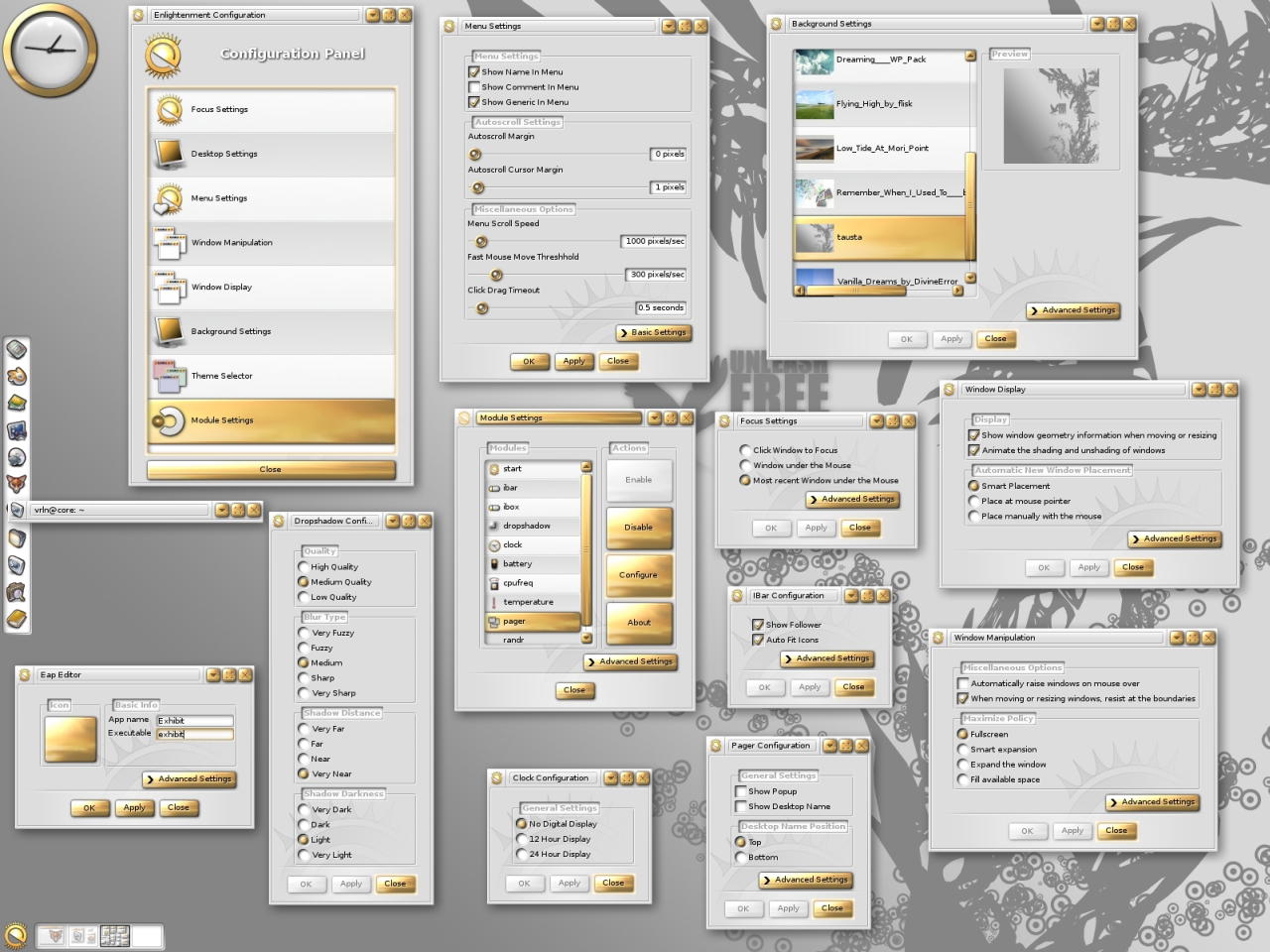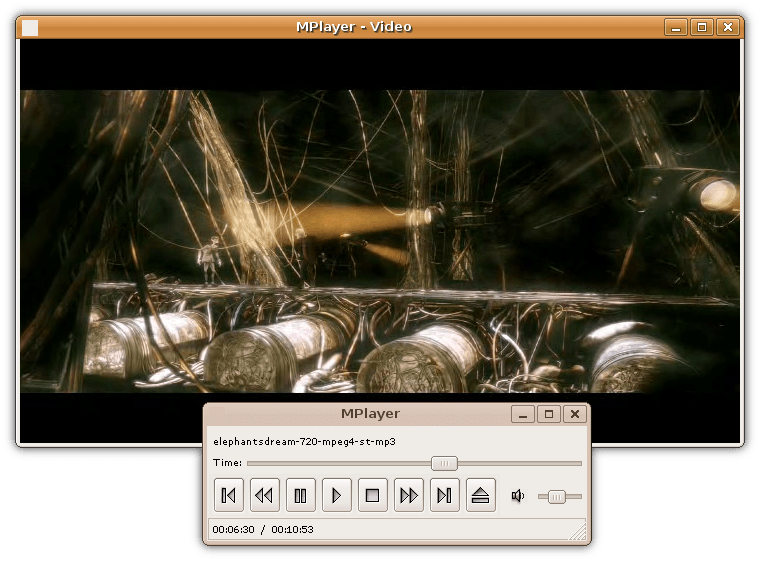|
Miller Columns
Miller columns (also known as cascading lists) are a browsing/visualization technique that can be applied to tree structures. The columns allow multiple levels of the hierarchy to be open at once, and provide a visual representation of the current location. It is closely related to techniques used earlier in the Smalltalk browser, but was independently invented by Mark S. Miller in 1980 at Yale University. The technique was then used at Project Xanadu, Datapoint, and NeXT. While at Datapoint, Miller generalized the technique to browse directed graphs with labeled nodes and arcs. In all cases, the technique is appropriate for structures with high degree (large fanout). For low-degree structures, outline editors or graph viewers are more effective. History Miller columns are most well known today as the “Columns view” mode of the Mac OS X Finder, as well as the "Browser" view in iTunes. The columns in Finder descend directly from the NeXTSTEP File Viewer's use of Miller col ... [...More Info...] [...Related Items...] OR: [Wikipedia] [Google] [Baidu] |
GNUstep
GNUstep is a free software implementation of the Cocoa (formerly OpenStep) Objective-C frameworks, widget toolkit, and application development tools for Unix-like operating systems and Microsoft Windows. It is part of the GNU Project. GNUstep features a cross-platform, object-oriented IDE. Apart from the default Objective-C interface, GNUstep also has bindings for Java, Ruby, GNU Guile and Scheme. The GNUstep developers track some additions to Apple's Cocoa to remain compatible. The roots of the GNUstep application interface are the same as the roots of Cocoa: NeXTSTEP and OpenStep. GNUstep thus predates Cocoa, which emerged when Apple acquired NeXT's technology and incorporated it into the development of the original Mac OS X, while GNUstep was initially an effort by GNU developers to replicate the technically ambitious NeXTSTEP's programmer-friendly features. History GNUstep began when Paul Kunz and others at Stanford Linear Accelerator Center wanted to port HippoDraw f ... [...More Info...] [...Related Items...] OR: [Wikipedia] [Google] [Baidu] |
Branching (revision Control)
Branching, in version control and software configuration management, is the duplication of an object under version control (such as a source code file or a directory tree). Each object can thereafter be modified separately and in parallel so that the objects become different. In this context the objects are called branches. The users of the version control system can branch any branch. Branches are also known as ''trees'', ''streams'' or ''codelines''. The originating branch is sometimes called the ''parent branch'', the ''upstream branch'' (or simply ''upstream'', especially if the branches are maintained by different organizations or individuals), or the ''backing stream''. ''Child branches'' are branches that have a parent; a branch without a parent is referred to as the trunk or the ''mainline''. The trunk is also sometimes loosely referred to as HEAD, but properly head refers not to a branch, but to the most recent commit on a given branch, and both the trunk and each named b ... [...More Info...] [...Related Items...] OR: [Wikipedia] [Google] [Baidu] |
Thunar
Thunar is a file manager for Linux and other Unix-like systems, initially written using the GTK+ 2 toolkit and later ported to the GTK+ 3 toolkit. It started to ship with Xfce in version 4.4 RC1 and later. Thunar is developed by Benedikt Meurer, and was originally intended to replace XFFM, Xfce's previous file manager. It was initially called Filer but was changed to Thunar due to a name clash. Thunar is designed to start up faster and be more responsive than some other Linux file managers, such as GNOME Files and Konqueror. Accessibility is accomplished using GNOME Accessibility Toolkit. Like the rest of Xfce, Thunar is designed to comply with standards, such as those stated at |
Enlightenment (window Manager)
Enlightenment, also known simply as E, is a compositing window manager for the X Window System. Since version 20, Enlightenment is also a Wayland compositor. Enlightenment developers have referred to it as "the original eye-candy window manager." Enlightenment includes functions to provide a graphical shell and can be used in conjunction with programs written for GNOME or KDE. When used together with the Enlightenment Foundation Libraries (EFL), Enlightenment can refer to an entire desktop environment. History The first version of Enlightenment was released by Rasterman (Carsten Haitzler) in 1997. Version 0.17, also referred to as E17, was in development for 12 years starting in December 2000 until 21 December 2012 when it was officially released as stable. During the development period it was also referred to as DR17 (Development Release 17). It is a complete rewrite on DR16 and was designed to be a full-fledged desktop shell, based on the new Enlightenment Foundation Li ... [...More Info...] [...Related Items...] OR: [Wikipedia] [Google] [Baidu] |
Text-based User Interface
In computing, text-based user interfaces (TUI) (alternately terminal user interfaces, to reflect a dependence upon the properties of computer terminals and not just text), is a retronym describing a type of user interface (UI) common as an early form of human–computer interaction, before the advent of modern conventional graphical user interfaces (GUIs). Like GUIs, they may use the entire Electronic visual display, screen area and accept mouse (computing), mouse and other inputs. They may also use color and often structure the display using special graphical Character (computing), characters such as ┌ and ╣, referred to in Unicode as the "box drawing" set. The modern context of use is usually a terminal emulator. Types of text terminals From console application, text application's point of view, a text screen (and communications with it) can belong to one of three types (here ordered in order of decreasing accessibility): # A genuine text mode display, controlled by a ... [...More Info...] [...Related Items...] OR: [Wikipedia] [Google] [Baidu] |
Ranger (file Manager)
__NOTOC__ ranger is a free and open-source file manager with text-based user interface for Unix-like systems. It is developed by Roman Zimbelmann and licensed under the terms of the GNU General Public License. The program can accomplish file management tasks with a few keystrokes, and mouse input is optional. In conjunction with extensions including the rifle file opener and scope.sh, ranger can be scripted to open files with pre-defined programs, and to display a preview of the selected file by calling external programs. Features * UTF-8 support * Multi-column display (Miller columns) * Preview of the selected file/directory * Common file operations (create/chmod/copy/delete/...) * VI-like console and hotkeys * Renaming multiple files at once * Automatically determine file types and run them with correct programs * Change the directory of your shell after exiting ranger * Tabs, bookmarks, mouse support * True-color image previews * Video thumbnails Design ranger is written i ... [...More Info...] [...Related Items...] OR: [Wikipedia] [Google] [Baidu] |
Shareware
Shareware is a type of proprietary software that is initially shared by the owner for trial use at little or no cost. Often the software has limited functionality or incomplete documentation until the user sends payment to the software developer. Shareware is often offered as a download from a website or on a compact disc included with a magazine. Shareware differs from freeware, which is fully-featured software distributed at no cost to the user but without source code being made available; and free and open-source software, in which the source code is freely available for anyone to inspect and alter. There are many types of shareware and, while they may not require an initial up-front payment, many are intended to generate revenue in one way or another. Some limit use to personal non-commercial purposes only, with purchase of a license required for use in a business enterprise. The software itself may be time-limited, or it may remind the user that payment would be appreciated ... [...More Info...] [...Related Items...] OR: [Wikipedia] [Google] [Baidu] |
Path Finder
Path Finder (originally SNAX) is a Macintosh file browser developed by Cocoatech. First released in 2001 simultaneously with the public release of Mac OS X 10.0 (Cheetah), it replicates or integrates most of the features of the Finder, but introduces additional functionality similar to that found in Windows's File Explorer, the defunct Norton Commander, and other third-party file browsers developed for a variety of platforms. Features Primarily a navigational file manager, Path Finder also features support for configuration as a correct orthodox, or spatial file manager. Most operations can take place in a single window, although more windows or tabs can be opened. The interface can further be customized by enabling or disabling various panels and/or their corresponding functionality. Some of Path Finder's features not found in the Finder include its namesake persistent breadcrumb navigation, shelf (called Drop Stack), transparent archive file browsing, manipulating hidden ... [...More Info...] [...Related Items...] OR: [Wikipedia] [Google] [Baidu] |
Metadata
Metadata is "data that provides information about other data", but not the content of the data, such as the text of a message or the image itself. There are many distinct types of metadata, including: * Descriptive metadata – the descriptive information about a resource. It is used for discovery and identification. It includes elements such as title, abstract, author, and keywords. * Structural metadata – metadata about containers of data and indicates how compound objects are put together, for example, how pages are ordered to form chapters. It describes the types, versions, relationships, and other characteristics of digital materials. * Administrative metadata – the information to help manage a resource, like resource type, permissions, and when and how it was created. * Reference metadata – the information about the contents and quality of statistical data. * Statistical metadata – also called process data, may describe processes that collect, process, or produce st ... [...More Info...] [...Related Items...] OR: [Wikipedia] [Google] [Baidu] |
Audio Player (software)
Media player software is a type of application software for playing multimedia computer files like audio and video files. Media players commonly display standard media control icons known from physical devices such as tape recorders and CD players, such as play ( ), pause ( ), fastforward (⏩️), backforward (⏪), and stop ( ) buttons. In addition, they generally have progress bars (or "playback bars"), which are sliders to locate the current position in the duration of the media file. Mainstream operating systems have at least one default media player. For example, Windows comes with Windows Media Player, Microsoft Movies & TV and Groove Music, while macOS comes with QuickTime Player and Music. Linux distributions come with different media players, such as SMPlayer, Amarok, Audacious, Banshee, MPlayer, mpv, Rhythmbox, Totem, VLC media player, and xine. Android comes with Google Play Music for audio and Google Photos for video, ... [...More Info...] [...Related Items...] OR: [Wikipedia] [Google] [Baidu] |

_en.png)

